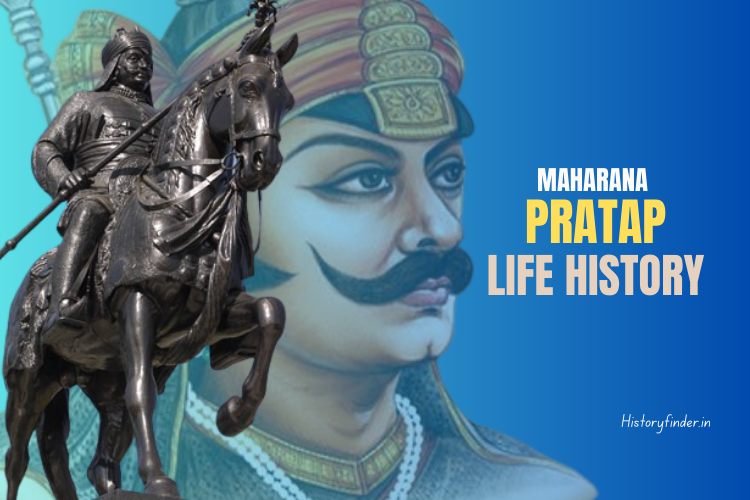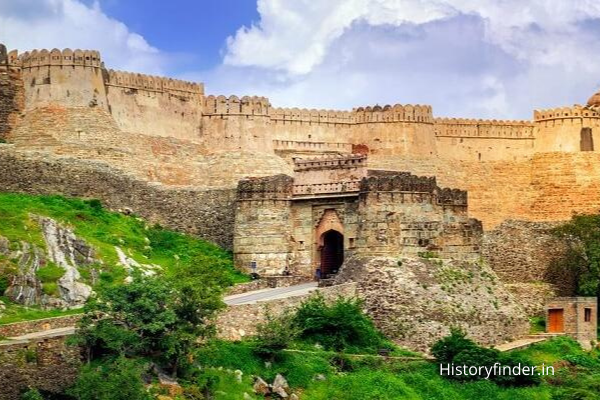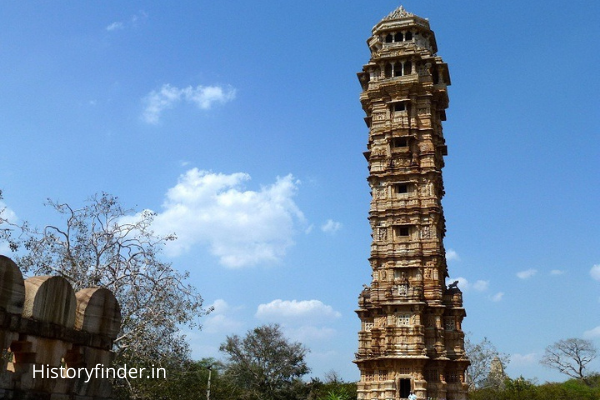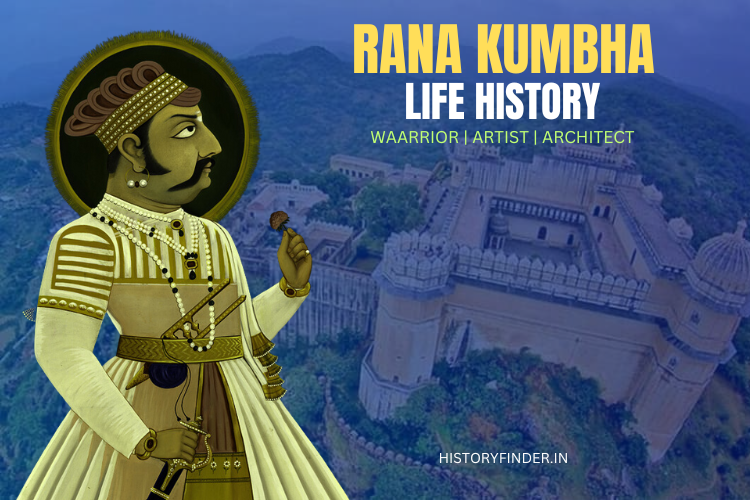Chittor Fort is one of the major tourist attractions of Chittorgarh, a district in present state of Rajasthan. Located in the southern region of Rajasthan, the fort once served as the capital of Mewar. Chittor Fort is also the largest fort in India, covering an area of 692 acres on hill top.
The word ‘garh’ actually means fort. Hence, the name Chittorgarh initially reflected the fort of Chittor only. But as Chittorgarh has now become a district of Rajasthan, the fort is often called Chittorgarh fort.
In 2013, the World Heritage Committee (WHC) declared the fort as a UNESCO World Heritage Site. WHC picked six forts of Rajasthan as a group called ‘Hill Forts of Rajasthan’. The other 5 forts are Kumbhalgarh, Ranthambore, Gagron, Amer and Jaisalmer fort.
History of Chittor Fort
There is no clear evidence when Chittor Fort was exactly built. Historians believe the Mauryans built the fort between 5th and 7th century.
Chittorgarh initial history is traceable since early 8th century. Bappa Rawal, the founder of Guhila dynasty of Mewar, received the fort as dowry for marrying a Solanki princess. For next 8 centuries, his descendants continued ruling Mewar and the hill fort of Chittor. The territory of Mewar had stretched from Ajmer to Gujarat once upon a time.
The largest fort of India covers about 65 historical structures which includes 4 palaces, 19 temples and 4 memorials. Apart from that, about 20 water bodies are there inside the fort to fulfil its water requirements.
Until 14th century, the Guhila rule at Chittorgarh was relatively peaceful. But next 2-3 centuries had really been a period of struggles for the Guhila Rajputs.
Rani Padmini/ Padmavati story: Siege of Chittor (1303)
According to the local legends, Alauddin Khalji of Delhi Sultanate was inquisitive about matchless beauty of Rani Padmini, the queen of Rana Ratan Singh. With a desire to capture Rani Padmini, Alauddin surrounded Chittor fort with his army. He then sent a message to Rana Ratan Singh to spare the city against just Rani Padmini. Rana Rattan Singh negotiated and agreed to let Alauddin see the reflection of his wife when he comes unarmed into the fort.
Alauddin played a trick here. He viewed Rani Padmini’s reflections on a mirror. As a part of Rajput gratitude, Rana Rattan Singh escorted him up to the outer gate. But to his fate, Alauddin’s men ambushed and captured the Rana.
Rani Padmini was clever enough to work out a counter plan to rescue Rana Ratan Singh.

The queen sent her messenger to Alauddin agreeing to meet him in person. Dozen’s of curtained palanquins sent downhill with armed Rajput soldiers hiding inside. With a surprise attack, they were successful to rescue Rana Ratan Singh. But unfortunately, during the combat, the Rajputs lost many of their soldiers.
Alauddin Khalji, soon retaliated with full force. Rana’s men could not resist for too long as they had already lost many of their soldiers. Rani Padmini along with other women performed Jauhar. According to his courtier Amir Khusrow, Alauddin ordered a massacre of 30,000 local Hindus after this conquest.
Many historians refuse to agree on the legend of Rani Padmini. However, they accept the trueness of Jauhar of Rani Padmini at Chittor Fort.
Khalji rule at Chittor Fort
Alauddin Khilji assigned his younger son, Khizr Khan. Afterwards, Chittorgarh renamed as Khizrabad.
But Khizr Khan was too young on that time. Therefore, Alauddin put him under supervision of Malik Shahin, his trusted slave. Khizr Khan’s rule continued until 1311. Too much pressure from several Rajput clans forced the Khaljis to offload fort’s ruling power to the Sonigra chief Maldeva. For next few years, the fort’s control remained under Maldeva.
Rana Hammir Singh and Sisodia clan
Around 1318, Hammir Singh of Sisodia clan, snatched the control of the fort from Maldeva. Rana Hammir was an efficient ruler in history of Chittorgarh. During his reign, kingdom of Mewar got her glory days back. His successors continued ruling Mewar from Chittorgarh without much resistance until 16th century.
After Rana Hammir Singh, his descendants Rana Ketra Singh, Rana Lakha Singh and Rana Mokal Singh continued Sisodia clan’s rule over Mewar, keeping Chittor fort as their base.
Maharana Kumbha
Maharana Kumbha alias, Kumbhakarna Singh was the son of Rana Mokal Singh, grand son of Rana Hammir Singh. He ascended the throne of Mewar in 1433 and had significant contributions to the history of Chittorgarh and Mewar. Rana Kumbha built 32 new forts to strengthen Mewar’s defense. Kumbhalgarh fort was perhaps was the most strategic fort which Rana Kumbha named after himself. The fort of Kumbhalgarh fort also known as ‘great wall of India’ for its longest perimeter walls of 36 km (22 miles).
Maharana Sanga
Rana Sanga was next successful Sisodia Rajput ruler in Chittorgarh history after Maharana Kumbha. With his tactical brilliance, Rana Sanga won many conquests and stretched his Kingdom from Satluj river in north down to Narmada river in south. Rana Sanga also defeated Ibrahim Lodi of Delhi twice in the battle of Khatoli and battle of Dholpur.
In 1519, Rana Sanga on his successful conquest, defeated Mahmud Khalji II in the battle Gagron and captured Malwa. Later in first battle of Panipat of 1526, Rana got badly injured and evacuated from the battle field by his vassals. After the battle, Mughal Empire established in India which put a permanent stoppage on Rajput expansion in north-western India.
Second siege of Chittor Fort (1535)
Bahadur Shah ascended the throne of Gujarat Sultanate in 1526. Following the death of Maharana Sanga in 1528, his son Ratan Singh II ascended the throne. Past his death in a war his brother Vikramaditya Singh ascended the throne in 1531. But short tempered nature of Vikramaditya Singh had already caused many issues with his nobles and vassals.

Bahadur Shah sensed the opportunity and sieged Chittor fort in 1535. Rana Vikramaditya’s arrogance and rude behavior caused many of the nobles of Mewar did not support him. However, on request of Rani Karnavati, queen of late Maharana Sanga, many civilians and nobles came forward to defend Chittor fort. But that was never enough in front of Gujarati artilleries led by Rumi Khan. Rana Vikramaditya and his brother Uday Singh successfully escaped to Bundi.
According to the local legends, the second siege of Chittor led to another incident of Jauhar. Rani Karnavati and 13,000 Rajput women committed Jauhar. Another 3,200 Rajput warriors also chose to die following the Jauhar.
Reference: History of Rajasthan by Rima Hooja. Buy on Amazon.in
Third siege of Chittor Fort (1567)
Chittor Fort suffered the third siege led by Mughal emperor Akbar. It was one of the strategic Mughal expeditions that changed the course of Rajput rule in history of Rajasthan.
Most Rajput kingdoms other than Chittor had already submitted to Akbar. Shakti Singh, son of ruling Maharana Uday Singh II of Mewar approached Akbar for help following an argument with his father. Akbar marched his army towards Chittor. But Shakti Singh, changed his plan at the very last moment. He went back to Chittor Fort and informed Rana about the attack.
Rana Uday Singh and his family escaped to the hills of Gogunda assigning the fort’s control to Jaimal Rathore.
Akbar was furious on Shakti Singh’s behavior. Starting from October 1567, Akbar led the siege of Chittorgarh for next four months. In February 1568, Akbar himself shot Jaimal Rathore with his musket. It eventually ended the Sisodia resistance as the Mughal army captured the fort on the next day. Females of the fort performed Jauhar known as third Jauhar of Chittorgarh.
Following the siege of Chittorgarh, Akbar ordered a massacre which took about 25,000 lives of Hindu civilians.
Mughal – Rajput peace treaty
Chittor Fort remained under Mughal’s control, following the victory of Akbar. Amar Singh, the son of great Rajput warrior Maharana Pratap Singh, signed a peace treaty with Mughal emperor Jahangir.
Amar Singh fought many battles with Mughals, to fulfil his father’s last wish of recapturing Chittor. However, an invasion led by Mughal prince Shah Jahan cost enormous damage of life and property of Mewar. It forced Amar Singh to make a diplomatic move to protect Mewar. The peace treaty of 1615 between the Mughals and Mewar Rana Amar Singh brought peace to Mewar.
According to the treaty, Rana’s vassals had to appear at the imperial court of the Mughals in person. However, Rana Amar Singh was exempted from the duty. As a goodwill gesture, Jahangir had given back Chittor Fort and its surrounding territories to Amar Singh in 1616.
Repairs and renovations
Chittor Fort had hardly gone through any repairs or renovations until 20th century.
The fort of Chittorgarh have undergone 3 massive sieges, causing life losses in several tens of thousands. Such historical records had induced certain doubts about the fort’s safety. Probably therefore, nobody felt the importance of renovating the fort.
Further, after the peace treaty between Sisodias and Mughals, life became peaceful at Chittorgarh.
Renovation of Chittor Fort finally took place in 1905 during the British rule.





Pingback: Rana Kumbha of Mewar and his military conquests - History Finder
Pingback: History of Jaisalmer Fort - History Finder